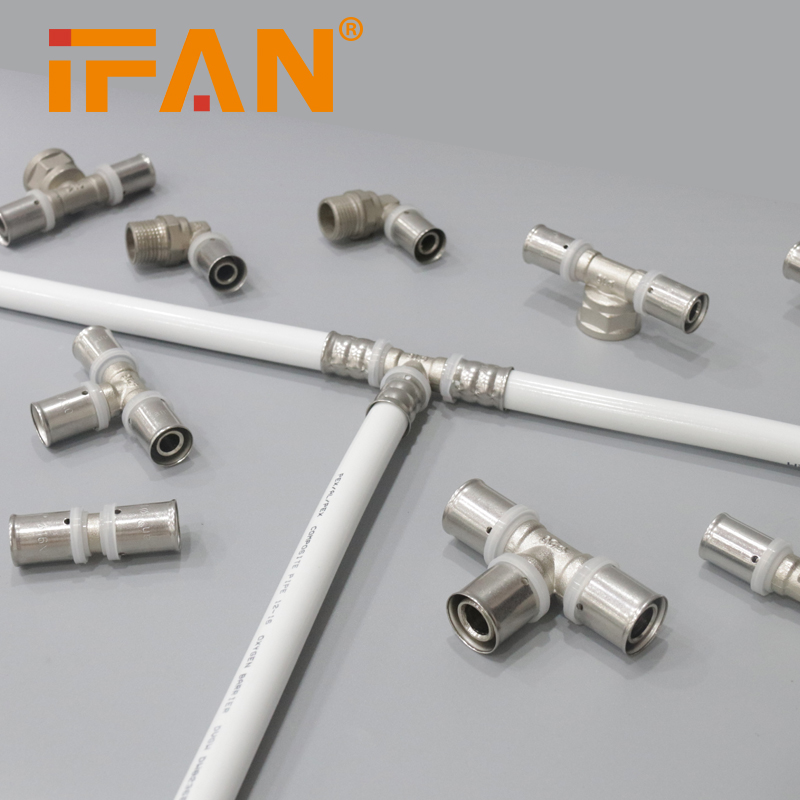1.Brass Press Fittings Preparation & Safety
✔ Turn off water/gas supply and depressurize the line.
✔ Wear safety goggles & gloves (metal shavings/debris risk).
✔ Ensure fittings are gas-rated (if used for gas) and compatible with pipe material.
2. Cut the Pipe Cleanly
- Use a rotary pipe cutter for a square, burr-free cut.
- Avoid saws (creates uneven edges).
3. Deburr & Clean the Pipe
- Remove inner/outer burrs with a deburring tool.
- Wipe pipe end with a clean cloth (dirt/oil affects seal).
4. Mark Insertion Depth
- Check fitting specs for minimum insertion depth (usually marked on fitting).
- Use a marker to indicate proper pipe position.
5. Insert Pipe into Fitting
- Push pipe fully into the fitting until it hits the internal stop.
- Ensure no gaps between pipe and fitting.
6. Position Press Tool Correctly
- Select the correct jaw size for the fitting.
- Align jaws centered over the fitting’s press ring (check manufacturer guide).
7. Perform the Press
- Squeeze the press tool fully until it releases (audible “click” on some models).
- Maintain a steady grip—do not twist or tilt during pressing.
8. Inspect the Pressed Connection
- Verify:
- Full 360° crimp (no visible gaps).
- Proper alignment (no pipe slippage).
- No cracks or deformities in fitting.
9. Pressure Test the System
- For water lines: Pressurize to 1.5x working pressure and check for leaks.
- For gas lines: Use soap solution or gas leak detector (if approved for gas).
10. Final Checks
- Ensure all pressed joints are supported with brackets/clamps (prevents stress).
- Document installation for warranty (some brands require proof of proper pressing).
Key Mistakes to Avoid
❌ Using non-compatible pipes (e.g., mixing PEX with brass press fittings).
❌ Pressing without full insertion (causes leaks).
❌ Reusing pressed fittings (always replace if disassembled).
Pro Tip
- Brass Press Fittings,For gas systems, only use fittings explicitly rated for gas
View more:https://www.ifanfittings.com/


